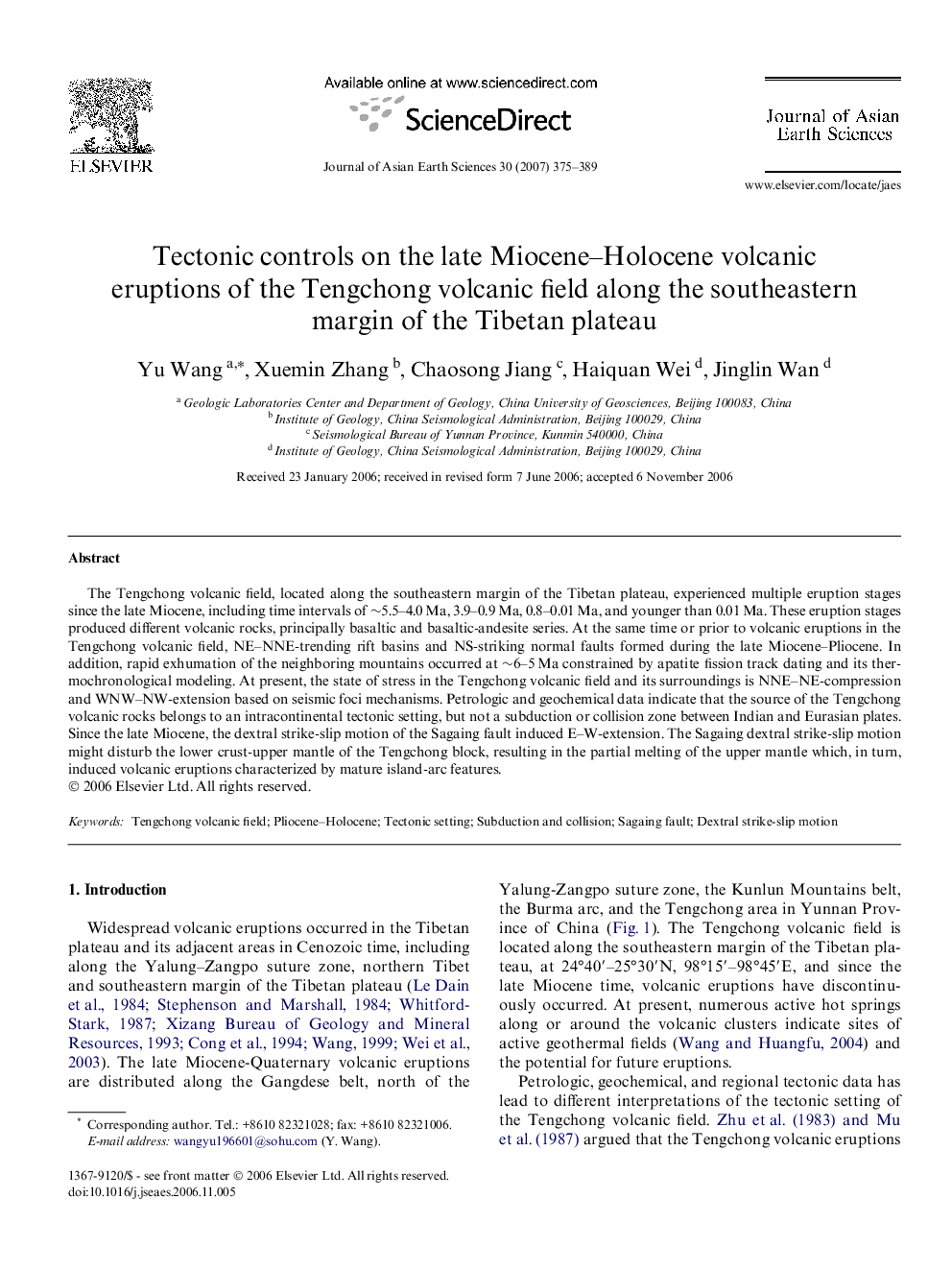| Article ID | Journal | Published Year | Pages | File Type |
|---|---|---|---|---|
| 4732300 | Journal of Asian Earth Sciences | 2007 | 15 Pages |
The Tengchong volcanic field, located along the southeastern margin of the Tibetan plateau, experienced multiple eruption stages since the late Miocene, including time intervals of ∼5.5–4.0 Ma, 3.9–0.9 Ma, 0.8–0.01 Ma, and younger than 0.01 Ma. These eruption stages produced different volcanic rocks, principally basaltic and basaltic-andesite series. At the same time or prior to volcanic eruptions in the Tengchong volcanic field, NE–NNE-trending rift basins and NS-striking normal faults formed during the late Miocene–Pliocene. In addition, rapid exhumation of the neighboring mountains occurred at ∼6–5 Ma constrained by apatite fission track dating and its thermochronological modeling. At present, the state of stress in the Tengchong volcanic field and its surroundings is NNE–NE-compression and WNW–NW-extension based on seismic foci mechanisms. Petrologic and geochemical data indicate that the source of the Tengchong volcanic rocks belongs to an intracontinental tectonic setting, but not a subduction or collision zone between Indian and Eurasian plates. Since the late Miocene, the dextral strike-slip motion of the Sagaing fault induced E–W-extension. The Sagaing dextral strike-slip motion might disturb the lower crust-upper mantle of the Tengchong block, resulting in the partial melting of the upper mantle which, in turn, induced volcanic eruptions characterized by mature island-arc features.
